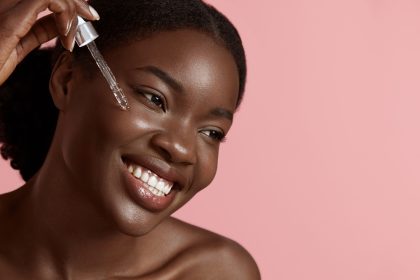Your hair might be trying to tell you something important about your nutritional status, but you’re probably dismissing the signals as normal aging or styling damage. Changes in hair texture, thickness, and growth patterns often reflect specific nutrient deficiencies that your body has been struggling with for months before other symptoms become obvious.
Hair follicles are among the most metabolically active cells in your body, requiring a constant supply of nutrients to produce healthy strands. When certain vitamins, minerals, or proteins become scarce, your hair texture changes in predictable ways that can help identify exactly what your body is missing.
Thinning and breakage point to protein deficiency
Hair is primarily composed of protein, specifically keratin, which requires adequate dietary protein and specific amino acids to maintain strength and structure. When protein intake is insufficient or poorly absorbed, hair becomes weak, brittle, and prone to breakage before other protein deficiency symptoms appear.
Sudden hair thinning or increased shedding often indicates that your body is prioritizing protein for essential functions over hair growth. Hair follicles enter a resting phase when protein becomes scarce, causing noticeable thinning within two to three months of inadequate protein intake.
The texture changes from protein deficiency are distinct from normal aging or hormonal hair loss. Protein-deficient hair typically becomes fine, weak, and breaks easily when wet, while maintaining its normal color and curl pattern. This type of hair change responds quickly to improved protein intake within weeks of dietary changes.
Coarse, dry texture signals iron and zinc problems
Iron deficiency affects hair texture by reducing oxygen delivery to hair follicles, creating coarse, dry strands that feel rough to the touch. Low iron levels also slow hair growth and can cause hair to lose its natural shine and become difficult to style or manage.
Zinc deficiency often manifests as changes in hair texture before other symptoms become noticeable. Hair may become coarse, dry, or develop an unusual texture that doesn’t respond to moisturizing treatments. Severe zinc deficiency can cause hair to become brittle and develop white or light-colored bands.
These mineral deficiencies are particularly common in people with restrictive diets, heavy menstrual periods, or digestive issues that affect nutrient absorption. The hair texture changes often appear months before blood tests reveal clinically low levels of these minerals.
Color and curl changes indicate B-vitamin shortages
B-vitamin deficiencies can cause dramatic changes in hair color and curl pattern, with biotin and B12 deficiencies being particularly notable for their effects on hair structure. Hair may become lighter, lose its natural curl, or develop uneven texture along the length of strands.
Biotin deficiency often causes hair to become fine and lose its natural curl or wave pattern, while also affecting the strength of the hair shaft. People with naturally curly hair may notice their curl pattern loosening or becoming inconsistent with biotin insufficiency.
Folate and B12 deficiencies can cause premature graying or changes in natural hair pigmentation, along with texture changes that make hair feel different to the touch. These changes are often reversible with proper supplementation when caught early.
Essential fatty acid gaps create dull, lifeless hair
Omega-3 fatty acid deficiency affects the scalp’s ability to produce natural oils, leading to dry, dull hair that lacks shine and feels rough or straw-like. The scalp may also become dry and flaky, further compromising hair health and appearance.
Hair that suddenly becomes difficult to style or loses its natural movement and bounce often indicates insufficient healthy fats in the diet. Essential fatty acids are crucial for maintaining the flexible structure of hair shafts and supporting scalp health.
These changes are particularly common in people following very low-fat diets or those with digestive conditions that affect fat absorption. The hair texture improvements from adequate essential fatty acid intake can be noticeable within weeks of dietary changes.
Addressing nutrient gaps through targeted nutrition
Focus on complete proteins that provide all essential amino acids, including eggs, fish, poultry, and plant-based combinations like beans with grains. Hair health requires not just adequate protein quantity but also the right amino acid profile for keratin production.
Include iron-rich foods like lean meats, dark leafy greens, and legumes alongside vitamin C sources to improve absorption. Zinc-rich foods like pumpkin seeds, nuts, and shellfish support hair follicle function and texture maintenance.
Consider B-complex supplements if you follow restrictive diets or have digestive issues that may affect B-vitamin absorption. These vitamins work together to support hair growth and maintain normal texture and color.
Include healthy fats from sources like fatty fish, nuts, seeds, and avocados to support scalp health and hair shine. The essential fatty acids in these foods are crucial for maintaining hair flexibility and natural moisture.
Monitor hair texture changes as an early indicator of nutritional status, but work with healthcare providers to identify and address underlying nutrient absorption issues that may be contributing to deficiencies despite adequate dietary intake.















